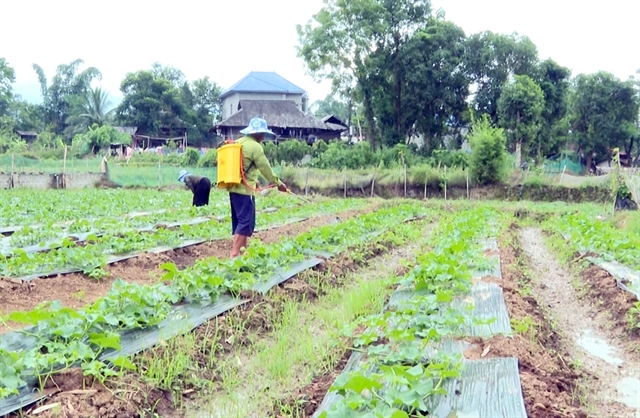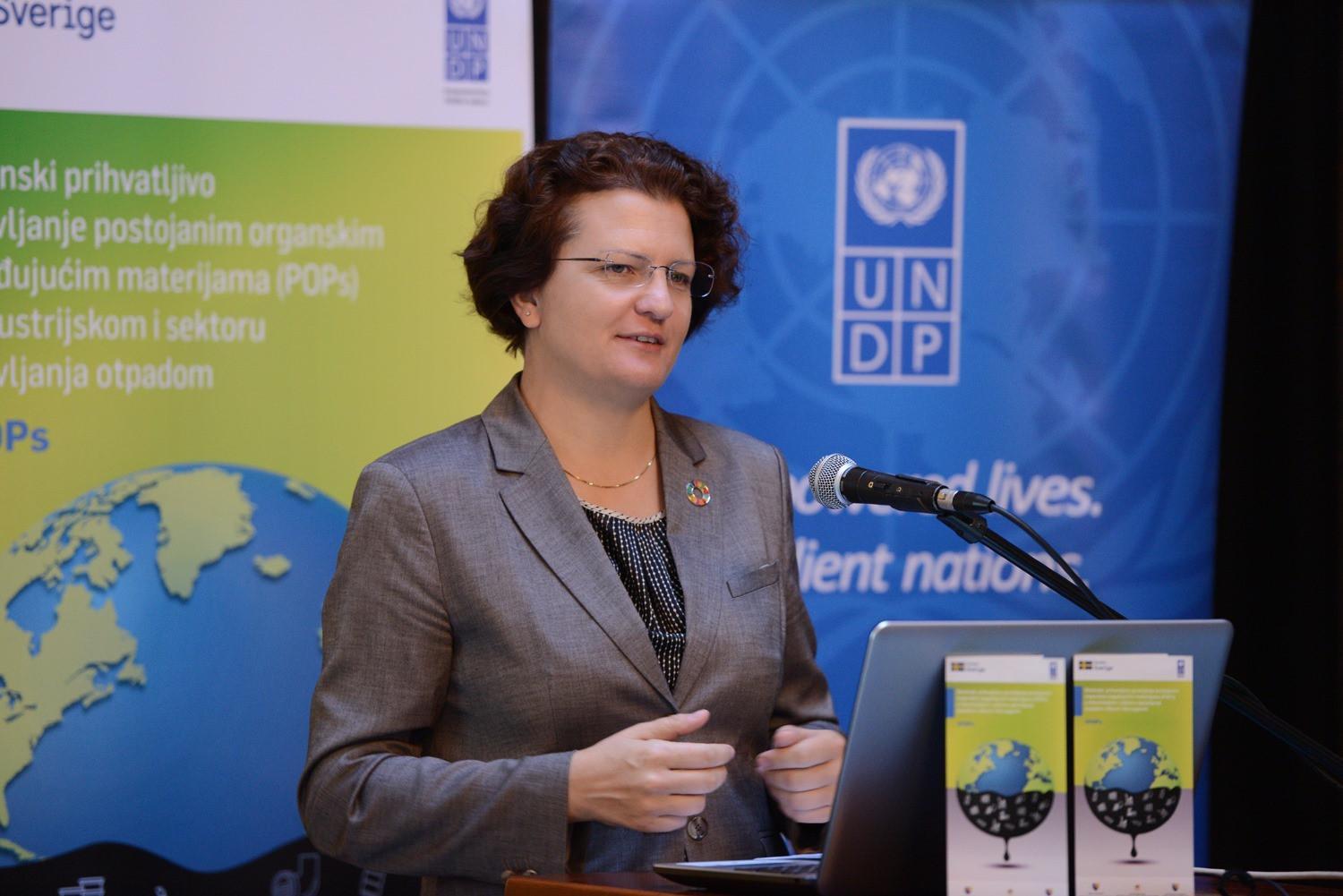Talk therapy overcomes massive stigma in developing countries – Northeastern Global News

Advancing Sustainable Development Goals Through Mental Health Interventions in Nepal
Introduction: Addressing SDG 3 in Low-Resource Settings
A significant global disparity exists in access to mental healthcare, posing a challenge to the achievement of Sustainable Development Goal 3 (Good Health and Well-being). To address this gap, a large-scale research study was conducted in Nepal to measure the impact of talk therapy on adolescents in a developing nation. This initiative, a collaboration between academic researchers, the World Bank, and a local non-governmental organization, exemplifies the multi-stakeholder partnerships essential for SDG 17 (Partnerships for the Goals) and directly targets SDG 3.4, which aims to promote mental health and well-being.
Study Methodology and Implementation
A Large-Scale Trial for Adolescent Well-being
The study was designed to provide accessible mental health support and build coping skills, aligning with the preventative health targets of SDG 3. The methodology involved:
- Participants: The trial included 1,707 adolescents from 40 government schools, focusing on a demographic critical for future sustainable development.
- Intervention: Each participant was offered free, one-on-one, in-person talk therapy sessions delivered directly to their homes to overcome accessibility barriers, a key aspect of SDG 10 (Reduced Inequalities).
- Structure: The intervention consisted of four weekly hour-long sessions with trained counselors, with an option for two additional sessions. To ensure a holistic approach, two family therapy sessions were included to engage parents and caregivers.
Key Findings and Impact on Development Targets
Overcoming Barriers: High Participation and Engagement
Despite the perceived stigma surrounding mental health in the region, the study recorded exceptionally high engagement, demonstrating a significant unmet need for mental health services.
- Approximately 89% of adolescents offered the therapy attended at least one session.
- A total of 82% of participants completed all offered sessions.
- Parental and caregiver involvement was also remarkably high, with 94% participating in family therapy sessions.
Contributions to SDG 3: Good Health and Well-being
The provision of talk therapy yielded significant positive impacts on the mental health of participants, directly contributing to the targets of SDG 3.
- Participants reported feeling less afraid of the future and experienced fewer sleep problems.
- Improvements were observed in emotional regulation and the ability to manage stress.
- Parents noted that their children appeared “less down” and were better able to manage their worries.
- The findings suggest that broadly available, non-targeted talk therapy can be an effective tool for advancing public mental health in low-resource settings.
Challenges in Linking SDG 3 and SDG 4
While the intervention successfully improved well-being (SDG 3), these positive effects did not translate into measurable improvements in educational outcomes, such as school attendance or classroom engagement. This finding underscores the complex relationship between mental health and SDG 4 (Quality Education) and suggests that more deeply integrated, school-based interventions may be necessary to achieve synergistic progress across both goals.
Implications and Future Directions for Achieving the SDGs
Addressing Systemic Gaps for SDG 3 and SDG 4
A primary obstacle to scaling mental health services, and thus achieving SDG 3, is the fundamental lack of trained counselors in Nepal and other developing nations. This resource shortage presents a systemic barrier that impacts both health and educational systems, as student well-being is a prerequisite for effective learning under SDG 4.
Innovative Models for Sustainable Service Delivery
To create a sustainable and scalable model, researchers propose a new approach focused on capacity building and integration within existing community structures.
- Task-Shifting: Training schoolteachers and other individuals who interact with adolescents daily in basic talk therapy techniques could expand the pool of available support providers.
- Early Intervention: Future work will focus on developing a school-based curriculum to address mental health at an early stage, aiming to build resilience and coping mechanisms before serious issues arise.
- Integrated Approach: By embedding mental health support within the educational framework, this model seeks to address the root causes of distress and more effectively link the objectives of SDG 3 and SDG 4, fostering a generation of healthy and educated citizens.
Analysis of SDGs, Targets, and Indicators
1. Which SDGs are addressed or connected to the issues highlighted in the article?
-
SDG 3: Good Health and Well-being
This is the primary SDG addressed. The article focuses entirely on a mental health intervention (talk therapy) for adolescents in Nepal. It discusses the stigma around mental health, the lack of counselors, and the positive health effects of providing therapy, such as reduced depression symptoms, fewer sleep problems, and improved emotional regulation.
-
SDG 4: Quality Education
The study’s participants were 1,707 adolescents from 40 government schools. A key part of the research was to measure whether the mental health intervention translated into better “educational outcomes, like attendance and engagement in the classroom.” Although the therapy did not improve these outcomes, the connection is explicit. Furthermore, the article concludes with a plan to develop a broader curriculum to be tested in schools and to train schoolteachers, directly linking mental health support to the educational environment.
-
SDG 10: Reduced Inequalities
The article highlights the disparity in access to mental health care, noting that while Americans go to therapy “in droves,” this is not the case in developing nations due to stigma and lack of resources. The study specifically targets a vulnerable population (adolescents) in a low-resource setting (Nepal) to address this inequality in access to essential health services.
-
SDG 17: Partnerships for the Goals
The project described is a clear example of a multi-stakeholder partnership. The article states it was “Born out of a World Bank mandate,” and the research was conducted by Professor Nishith Prakash and his collaborators “in collaboration with a local NGO.” This partnership between academia, an international financial institution, and a local non-governmental organization was essential to designing and implementing the large-scale therapy trial.
2. What specific targets under those SDGs can be identified based on the article’s content?
-
SDG 3: Good Health and Well-being
- Target 3.4: “By 2030, reduce by one third premature mortality from non-communicable diseases through prevention and treatment and promote mental health and well-being.” The entire study is an effort to promote mental health and well-being among adolescents by providing talk therapy, which the article describes as helping young people build “coping skills” and improve their “outlook on life.”
- Target 3.8: “Achieve universal health coverage, including financial risk protection, access to quality essential health-care services…” The study directly addresses this by offering “free one-on-one in-person talk therapy” to adolescents, removing the financial and accessibility barriers that often prevent people in developing nations from seeking mental health support.
-
SDG 4: Quality Education
- Target 4.a: “Build and upgrade education facilities that are child, disability and gender sensitive and provide safe, non-violent, inclusive and effective learning environments for all.” The future plan mentioned in the article to “develop a broader curriculum to test in schools” and to train schoolteachers in therapy techniques is a direct effort to create a more supportive and inclusive learning environment that addresses students’ mental health needs at a “root level.”
-
SDG 10: Reduced Inequalities
- Target 10.2: “By 2030, empower and promote the social, economic and political inclusion of all, irrespective of age…” The project empowers adolescents in Nepal by providing them with mental health tools and support systems that are more readily available in developed countries, thereby reducing inequality in access to services that are crucial for well-being and personal development.
-
SDG 17: Partnerships for the Goals
- Target 17.16: “Enhance the global partnership for sustainable development, complemented by multi-stakeholder partnerships that mobilize and share knowledge, expertise, technology and financial resources…” The project is a textbook example of this target, involving a collaboration between a university researcher (sharing knowledge), a local NGO (providing local expertise and implementation), and the World Bank (providing a mandate and likely resources) to address a health challenge in a developing country.
3. Are there any indicators mentioned or implied in the article that can be used to measure progress towards the identified targets?
Yes, the article mentions or implies several indicators used to measure the project’s impact:
-
Indicators for SDG 3 (Good Health and Well-being)
- Therapy take-up rate: The article explicitly states that “89% of the young people who were offered therapy attended at least one session,” and “94% of parents and caregivers took part in the family therapy sessions.” This measures access to and acceptance of mental health services.
- Prevalence of depression symptoms: The research found that therapy had a “slightly larger impact on participants with symptoms associated with depression.”
- Self-reported well-being metrics: The article notes that “young people reported feeling less afraid of the future and suffering from fewer sleep problems.”
- Observer-reported well-being metrics: It is mentioned that “Parents also said their children generally appeared ‘less down’ and more capable of managing their worries.”
- Emotional regulation capacity: The article states that “Emotional regulation, the ability to manage emotions and stress, also improved.”
-
Indicators for SDG 4 (Quality Education)
- School attendance and classroom engagement: These were used as indicators to measure educational outcomes. The article specifies that the positive mental health effects “failed to translate into educational outcomes, like attendance and engagement in the classroom,” indicating these were key metrics being tracked.
-
Indicators for SDG 17 (Partnerships for the Goals)
- Existence and structure of the partnership: The article describes the successful collaboration between researchers, a local NGO, and the World Bank as the mechanism for delivering the intervention, which serves as an indicator of a functioning multi-stakeholder partnership.
4. Table of SDGs, Targets, and Indicators
| SDGs | Targets | Indicators |
|---|---|---|
| SDG 3: Good Health and Well-being |
3.4: Promote mental health and well-being.
3.8: Achieve universal health coverage and access to quality essential health-care services. |
|
| SDG 4: Quality Education | 4.a: Provide safe, inclusive and effective learning environments for all. |
|
| SDG 10: Reduced Inequalities | 10.2: Empower and promote the social inclusion of all, irrespective of age. |
|
| SDG 17: Partnerships for the Goals | 17.16: Enhance the global partnership for sustainable development, complemented by multi-stakeholder partnerships. |
|
Source: news.northeastern.edu
What is Your Reaction?
 Like
0
Like
0
 Dislike
0
Dislike
0
 Love
0
Love
0
 Funny
0
Funny
0
 Angry
0
Angry
0
 Sad
0
Sad
0
 Wow
0
Wow
0















































































